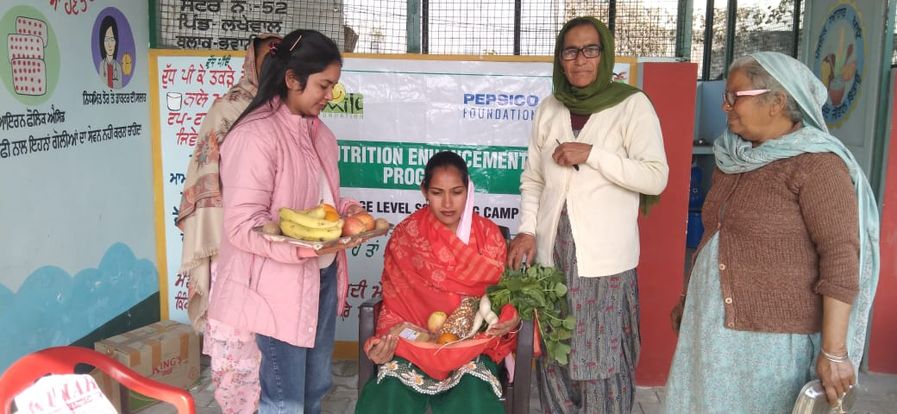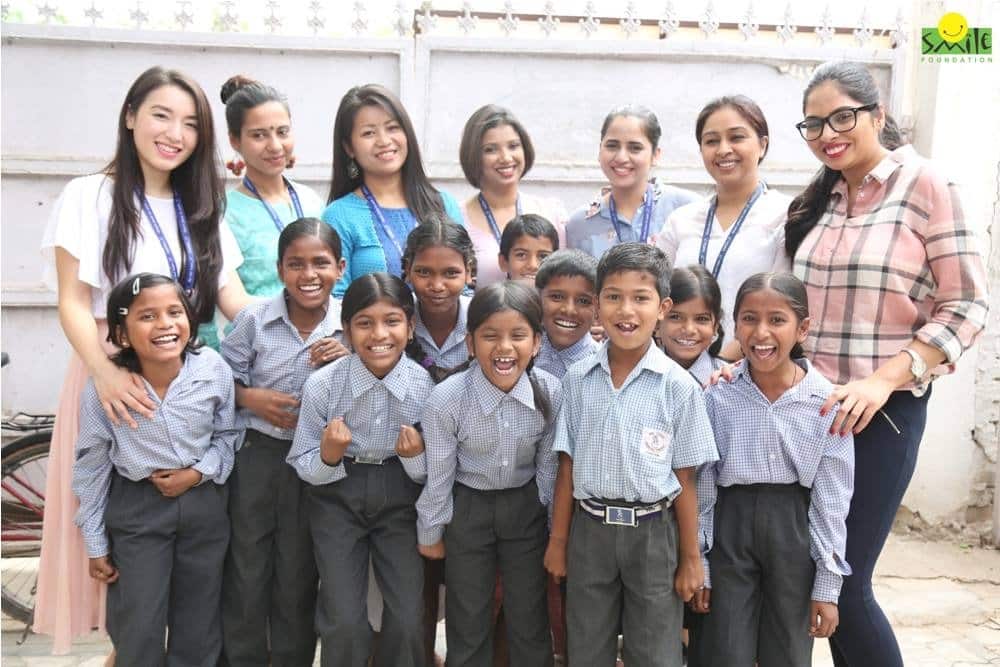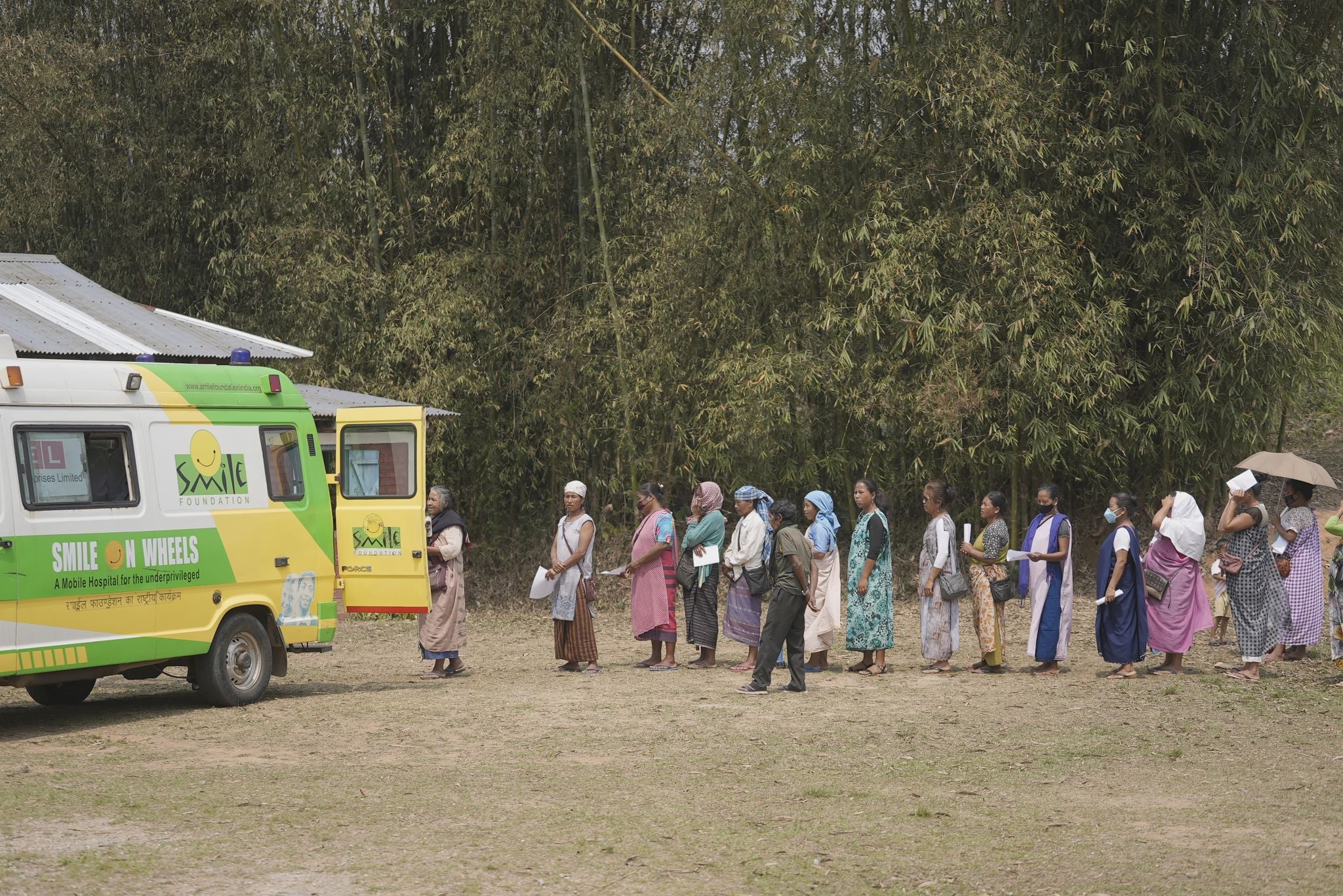Anemia, marked by a deficiency in red blood cells or hemoglobin levels, remains a pressing public health concern in India, especially among pregnant women and infants residing in rural and remote regions. Despite the implementation of the Anemia Mukt Bharat programme by the Government of India, the prevalence of anemia persists, affecting an alarming 50-60% of pregnant women in the country and approximately 58% of children under the age of five are estimated to be anemic.
The impact of anemia extends beyond physical health. It affects cognitive development, compromises immune function and perpetuates cycles of poverty. For pregnant women, anemia increases the risk of maternal complications during pregnancy, including preterm birth and low birth weight, leading to maternal mortality. In infants and young children, anemia impedes growth and development, making them more susceptible to infections and impairing cognitive function.
Anemia in Pregnant Women and Infants: Focus on Sangrur, India
Sangrur, located in the northern state of Punjab, India, faces unique challenges regarding anemia among pregnant women and infants. Despite being a relatively prosperous region compared to many parts of India, Sangrur and its surrounding areas struggle with high rates of anemia due to a combination of various factors like dietary habits, cultural practises and limited access to healthcare services.
- Dietary Patterns: Although Punjab is known as the “breadbasket of India” due to its agricultural productivity, dietary habits often lack diversity, leading to deficiencies in essential nutrients like iron, folic acid and vitamin B12. Traditional diets, which heavily rely on wheat-based products, may not provide adequate micronutrients crucial for combating anemia.
- Cultural Practices: Cultural norms surrounding food preparation and consumption can also contribute to anemia. For instance, vegetarian diets, prevalent in many communities in Sangrur, may lack sufficient sources of bioavailable iron, increasing the risk of iron deficiency anemia.
- Healthcare Infrastructure: While Sangrur benefits from relatively better healthcare infrastructure compared to some other regions in India, access to quality healthcare services, including antenatal care and nutritional support, remains a challenge, particularly in rural areas. Limited access to healthcare facilities and skilled healthcare providers can hinder early detection and management of anemia among pregnant women and infants.
Importance of Addressing Anemia
Addressing anemia is not just a desire but an urgent necessity, particularly in vulnerable populations such as pregnant women and infants. Anemia poses serious health risks and has far-reaching consequences that affect not only individuals but also communities and societies as a whole. But what is the urgency and importance:
- Health Impact: Anemia increases the risk of maternal complications during pregnancy, such as preterm birth, low birth weight and maternal mortality. In infants and children, anemia can impair cognitive development, stunt growth and weaken the immune system, making them more susceptible to infections and other illnesses.
- Inter-generational Impact: Anemic mothers are more likely to give birth to anemic infants, perpetuating a vicious cycle of poor health outcomes across generations.
- Economic Burden: The healthcare costs associated with treating complications of anemia, such as maternal and infant morbidity and mortality, can be substantial.
- Human Rights and Equity: Addressing anemia is essential for promoting health equity and ensuring that vulnerable populations, such as pregnant women and infants, have equal access to the resources and support they need to thrive.
Strategies for Addressing Anemia
Efforts to address anemia in Sangrur and similar regions require a multilevel approach involving healthcare providers, community organisations, and government interventions. Some specific strategies include:
- Nutritional Interventions: Promoting dietary diversification and ensuring access to nutrient-rich foods, particularly those high in iron, folic acid and vitamin B12, is essential for preventing and managing anemia. This includes promoting the consumption of iron-rich foods such as leafy greens, legumes and fortified cereals.
- Supplementation Programmes: Providing iron and folic acid supplements to pregnant women and infants can help meet their increased nutritional needs during critical periods of growth and development.
- Healthcare Access: Strengthening healthcare systems and improving access to antenatal care, prenatal screening and early intervention services are important for detecting and managing anemia in pregnant women and infants.
- Education and Awareness: Raising awareness about the importance of nutrition, prenatal care and anemia prevention through targeted education and outreach programmes can empower individuals and communities to make informed decisions about their health.
Government Initiatives helping reducing the anemia
Recognising the severity of the issue, the Indian government has launched several initiatives to combat anemia among pregnant women.
- The Anemia Mukt Bharat (Anemia Free India) strategy, which aims to reduce anemia prevalence by improving the consumption of iron and folic acid supplements, promoting nutrition education and enhancing the screening and treatment of anemia.
- The Pradhan Mantri Surakshit Matritva Abhiyan (PMSMA), which provides free antenatal care and iron-folic acid supplementation to pregnant women.
- The Integrated Child Development Services (ICDS) scheme is a comprehensive initiative that offers supplementary nutrition, health education and regular health check-ups to children under six years of age.
- The Mid-Day Meal Scheme, aimed at improving the nutritional status of school-age children, also plays a part in combating anemia by providing nutritious meals that include iron-fortified foods.
Sangrur intervention of Smile Foundation
In just six months, Sangrur has achieved a remarkable turnaround in combating anemia among government schoolchildren. Previously, with 40.57% of students affected by anemia in May 2023, the district has now seen a drastic reduction to just 2.7% in January 2024. Anemia, characterised by low levels of haemoglobin (Hb) or red blood cells, posed a significant health concern among the student population.
The key to this success lies in a targeted dietary intervention programme implemented by Smile Foundation and the Sangrur district administration. By incorporating iron-rich foods into mid-day meals and ensuring the full intake of folic acid tablets, significant strides have been made in addressing anemia prevalence among schoolchildren.
As part of the pilot initiative, the administration concentrated efforts on 21 schools, encompassing 1,188 students. Emphasising the importance of nutrition, schools were encouraged to cultivate kitchen gardens, yielding iron-rich vegetables like spinach, fenugreek (methi), curry leaves and drumsticks, which were then incorporated into the mid-day meals.
Additionally, a strategic adjustment was made to guarantee the complete consumption of folic acid tablets. Recognising past challenges where tablets distributed during morning assemblies often went unconsumed, the administration shifted distribution to immediately after mid-day meals. This simple yet effective change ensured that all students ingested the tablets, addressing misconceptions that previously led to their disposal.
Jitendra Jorwal, the Deputy Commissioner of Sangrur, highlighted the proactive approach, stating, “The project will be extended to all government schools in Sangrur soon.” This commitment underscores the the dedication of administration to safeguarding the health and well-being of all students.
Moreover, to complement the dietary interventions, we conducted three counseling sessions in each selected school. These sessions aimed to instill better eating habits and raise awareness about the importance of nutrition among students, further reinforcing the impact of the initiative on overall health outcomes.
Beyond Sangrur
In conclusion, the success of Sangrur in combatting anemia among schoolchildren serves as a testament to the power of targeted interventions and collaborative efforts. By prioritising nutrition and ensuring the comprehensive implementation of health programmes, the district has set a commendable example for others to follow in promoting the well-being of future generations.
While government initiatives represent significant progress, challenges persist, including healthcare coverage and social determinants of health. Broader interventions addressing water, sanitation and hygiene are needed to combat anemia effectively.
Combating anemia demands collaborative efforts, involving government bodies, development organisations like Smile Foundation, healthcare providers and communities. By prioritising targeted interventions and equitable access to resources, India can pave the path to an anemia-free future, ensuring the health and well-being of its most vulnerable populations.









